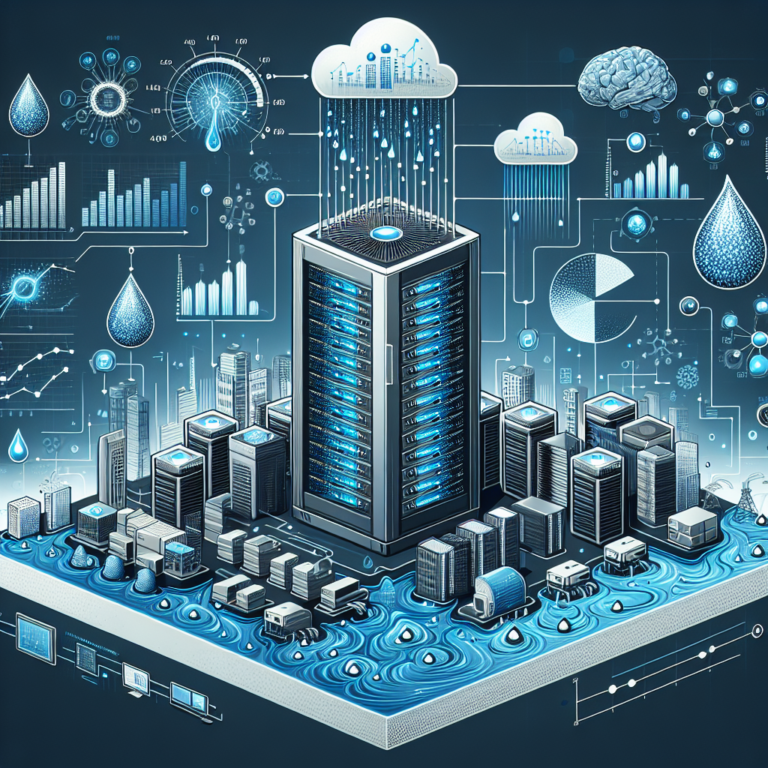AI Revolution Sparks Increased Water Usage in Data Centers 🚰
The Rise of AI and Its Impact on Water Resources
The explosion of artificial intelligence (AI) technology has led to an unprecedented demand for data centers, which are essential for powering the AI applications we rely on today. However, this surge in data processing capability has a significant environmental cost, particularly regarding water consumption. Data centers utilize large amounts of water primarily for cooling their computing equipment, which is critical to maintaining optimal performance and preventing overheating.
Staggering Increase in Water Consumption
According to recent findings, the water consumption in areas densely populated with data centers has skyrocketed. For instance, in Virginia—home to one of the world’s largest clusters of data centers—water usage surged from 1.13 billion gallons in 2019 to 1.85 billion gallons in 2023. This represents a striking increase of nearly 66% in just four years.
A Global Concern
This trend is not limited to Virginia; it is reflected worldwide, raising alarms about the sustainability of current practices in water management. Major players in the data center industry, such as Microsoft and Google, have reported alarming statistics regarding their water consumption. For example:
- Microsoft revealed that a staggering 42% of its water usage in 2023 came from regions already experiencing water stress.
- Google noted that about 15% of its freshwater withdrawals originated from areas classified as having high water scarcity.
The Challenges of Water Recycling in Data Centers
One natural solution to combat the increasing demand for water would be the implementation of closed-loop recycling systems in data centers. While some facilities do incorporate such systems, many still face challenges. A significant portion of water used is set aside specifically for humidity control, mostly in arid regions. This is crucial because:
- Low humidity can lead to the buildup of static electricity, which poses a risk to sensitive computer equipment.
- Evaporative cooling methods require substantial water draw, which adds to the total consumption.
The Importance of Humidity Control
Maintaining adequate humidity levels is necessary to prevent static buildup, which can damage electronic components. Drier climates exacerbate this problem, resulting in data centers having to consume even more water to maintain operational integrity. This trade-off poses a significant dilemma for facility operators who are tasked with ensuring optimal performance while simultaneously being aware of their environmental impact.
Strategies for Responsible Data Center Management
To mitigate the growing water crisis linked with data center operations, several strategies can be employed:
- Innovative Cooling Solutions: Data centers can explore alternative cooling technologies that use less water, such as air cooling or advanced cooling systems that utilize phase-change materials.
- Water-Sourcing Flexibility: By diversifying sources of water, including reclaimed and greywater, data centers can help alleviate pressure on local water supplies.
- Enhanced Monitoring: Investing in advanced monitoring systems for real-time tracking of water usage can help identify wastage and promote efficiency.
- Community Partnerships: Collaborating with local municipalities and water conservation organizations may lead to better water management practices and community support.
Substituting Technologies for a Sustainable Future
Emerging technologies are providing new avenues to minimize water use within data centers while allowing them to operate efficiently. Strategies such as using liquid cooling, which is more effective and often requires less water, are gaining traction. These innovations demonstrate the industry’s potential to evolve and meet both operational and environmental challenges head-on.
The Role of Corporate Responsibility
Companies operating data centers hold a significant responsibility to address water consumption issues. By adopting sustainable practices, they not only contribute to environmental protection but also enhance their overall corporate reputation. Investing in water conservation measures can lead to long-term cost savings and ensure that operations are sustainable for decades to come.
Conclusion
As we continue to embrace the AI revolution, understanding its ripple effects on resources like water becomes increasingly vital. The data center industry has a challenging path ahead, yet the potential for innovation and improvements can pave the way for a more sustainable future. The commitment to responsible resource management is not just a choice; it’s a necessity for ensuring that technology can grow without adversely impacting our planet’s precious resources. 🌎




0 Comments